#Middle East and Eastern European policies
Text
The Devil went down to Georgia...
Victoria Nudelman (alias Numan), eminence gris and the State Department’s Instigator-in-Chief of the Middle East and Eastern Europe has successfully orchestrated many wars and crises in her area of influence. This belligerent zionist dame played puppet-master behind the Maidan and is mainly responsible for today’s the war in Ukraine.Good news is, the Biden-circus got er to resign, most likely as…
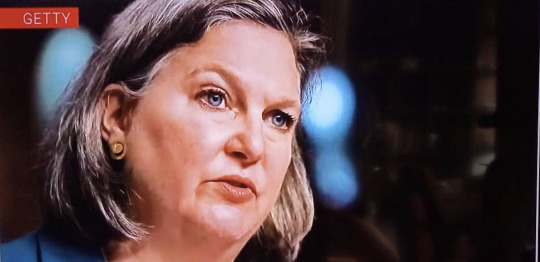
View On WordPress
#Maidan-Revolution#Middle East and Eastern European policies#Nudelman#State Department#US Vice-president Joe Biden#Victoria Nuland#war in Ukraine#Zelensky
0 notes
Note
Hi, I've been trying to learn on my own regarding this subject but I've been having a lot of trouble. Is there some sort of cultural disconnect between Jewish Westerners (esp Americans) and Jewish Easterners (esp Eastern Europeans but Middle East as well)? I had the weirdest conversation the other day with a Jewish American who didn't seem to think Ukrainian Jews counted as Jewish? Am I insane, or did I stumble across a cultural or political divide I wasn't aware of? How do I even go about researching something like that? thank you for your patience and help, and I hope people are kind to you.
So, they might be referring to the fact that not all Ukrainian (and any formerly USSR country) Jews are matrilineal Jews.
According to traditional Jewish law, in order for a person to be Jewish they either have to convert to Judaism or have been born to a Jewish mother. This law of matrilineality comes from a time when Jews were being exiled and scattered around the world, and preserving Jewish identity was extremely important. Before DNA tests, you really couldn't be 100% sure who a person's father was, but you could for their mother cause y'know......there would have been people witnessing them being born. Thus, it was decided to make Jewish descent exclusively matrilineal.
The USSR was very good at eliminating much of Jewish life and identity. Jewish documents were destroyed, so many people now don't have a reliable paper trail proving their ancestry and Jewishness. Additionally, some may be patrilineal Jews, but not matrilineal Jews, and therefore not considered valid by some Jewish denominations.
Now, I wouldn't quite say this is a "West" versus "East" issue, since many Israeli Charedi and Dati Jews feel the same way as American Orthodox Jews do. According to Israel's current Right of Return, people from former USSR countries qualify if they have even just a Jewish grandparent. This policy has allowed many lives to be saved during the Soviet era. With the war in Ukraine and a new influx of refugees, many Israelis are suspicious and don't want non-Jewish Ukrainians to be shown deference, and they are wary of Ukrainians who claim Jewish heritagr because they think they're lying just to have access to Israeli resources.
The situation regarding Jews and those descended of Jews in former USSR countries is pretty unique, and the "controversy" has more to do with interpretations of Jewish law than global location.
67 notes
·
View notes
Text
ODESA, Ukraine—In his office overlooking Odesa’s Pivdennyi Port on the Black Sea, Viktor Berestenko smiled contentedly at the half-dozen large international cargo ships just beyond the harbor. “It’s as beautiful as your first kiss,” said the grinning president of the Association of International Freight Forwarders of Ukraine. Speaking to Foreign Policy in late March Berestenko was only too happy to inform me that Ukraine’s three free ports—all in and around Odesa—are operating 24/7, and that the country’s grain exports are back to prewar levels.
The restoration of Black Sea trade is a major breakthrough for Ukraine, in stark contrast to the losses it has endured this year on the eastern fronts. In the Black Sea theater, Ukraine has pulled off the unthinkable: beating back the esteemed Russian Navy even though it has next to no naval force of its own.
From the tiny swath of coastline around Odesa, Ukraine has stymied Moscow’s attempt to landlock and hobble its economy by rendering it unable to market its voluminous agricultural exports. In the spring of 2022, the Russian military barricaded Ukraine’s Black Sea ports and brought exports to a standstill. This forced Ukraine to shift to land routes to market its goods and caused worldwide grain prices to spike, which raised concerns about famine in the Middle East and Africa. Today, Russia still occupies 16 Ukrainian ports. But the Black Sea front looks more hopeful for Ukraine than at any time since the war’s onset more than two years ago.
The Ukrainian fleet lost 80 percent of its vessels after the Russian occupation of Crimea in 2014. But, relying a combination of missile systems and unmanned drone boats guided by advanced GPS and cameras, Ukraine’s armed forces claim to have crippled a third of Russia’s Black Sea fleet. They have also upended the Russian supply lines that serve thousands of troops in the occupied areas of southern Ukraine.
On March 24, Ukraine landed another blow, reportedly using U.K.- or French-made air-to-surface missiles, taking out two large Russian landing ships and other infrastructure near the occupied Crimean port city of Sevastopol. Russia’s fleet has suffered such a drubbing that it prompted the firing of its top admiral, Nikolai Yevmenov, in mid-March. Today, Russia’s remaining ships are in docked in berths along the far side of the Crimean Peninsula, out of sight but not entirely out of Ukraine’s reach.
“Russia wanted to turn the Black Sea into a big Russian lake. But Ukraine reversed it,” said Volodymyr Dubovyk, the director of the Center for International Studies at the Odesa Mechnikov National University. “Russian ships today don’t venture into the northwest of the Black Sea.”
This cover has enabled Ukraine to improvise a sea corridor that begins in Odesa and hugs the safe shores of NATO members Romania, Bulgaria, and Turkey as ships travel southwest en route to the Bosphorus Strait, through which most Black Sea trade passes. Exploiting a bumper crop, Ukraine is now exporting as much grain—corn, wheat, and barley—as it did before the war, as well as other goods, and has opened its Odesan ports for nighttime business to handle yet more. Prior to the war, Ukraine traded more grain than the entire European Union and supplied half of the globally traded sunflower oil, as well as iron ore and fertilizer, according to Bloomberg.
“This is enormously important for Ukraine’s economy, for the Odesa region, and for our future,” said Sergey Yakubovskiy, an economist at Odesa National University. “We have to do everything to keep this route open and reliable.”
Ukraine’s asymmetric Black Sea strategy relies ever more upon Ukraine-made drone boats—known as uncrewed surface vessels (USVs)—that speed across the water beneath Russian radar carrying up to 800 kilograms (1,760 pounds) of explosives. These projectiles have sunk or disabled some of the 24 lost Russian warships, evidence that Ukraine’s domestic arms production has been stepped up and is increasingly consequential in the absence of anticipated U.S. and European assistance. According to the Guardian, there are currently 200 drone manufacturing companies in Ukraine, some of them bankrolled by crowdfunding campaigns. In December 2023, they delivered 50 times as many robotic explosives as in the entire year of 2022, according to Ukraine’s Ministry of Digital Transformation.
Ukraine’s strategy is to maintain its presence in the Black Sea with the prospect of soon acquiring the longer-range missiles that it needs to hit Crimea itself and Russia proper beyond it, Dubovyk said. For Ukraine, he explained, the pressing issue is what comes next. “Crimea is in play, and if Ukraine can put more pressure on Russia there, it can make the occupation untenable. It would change the war’s logic if Russia couldn’t supply the eastern fronts from Crimea,” he said.
Russia’s response has been to target Odesa’s ports, energy infrastructure, and housing blocks with ballistic missiles. Seldom does a day pass without air raid sirens in the port city, which send its residents scrambling into their cellars. In March alone, Russian attacks killed 32 civilians.
One would think that the new coastal sea route would obviate Ukraine’s need to access EU markets via land, namely through Central Europe, and thus ameliorate the friction it has caused between the Central Europeans and Ukraine. Following Russia’s invasion, the EU allowed Ukraine tariff-free access to its markets, which had the effect of undermining the Visegrad Group states’ own grain trade and prompting farmers to take to the streets in anger, above all in Poland. Now, logically, trade could revert to its previous routes and the injurious tiff come to an end.
Not so quickly, explained Yakubovskiy, the economist. He pointed out that Ukraine’s new sea corridor is a temporary and unsanctioned byway, possible now only as a result of Russia’s naval weakness and an informal agreement between Russia and Ukraine not to target civilian shipping. It could end at any moment, he said.
As for Russia, it is not likely to improve its Black Sea positions soon. This is because Turkey controls the Bosphorus and Dardanelles straits, and Ankara has chosen to adhere to the letter of the 1936 Montreux Convention, which prohibits the passage of warships through the straights into the Black Sea in a time of war. Russia thus has no way of getting reinforcements to its ports.
The upshot of Russia’s retreat from Black Sea waters and Turkey’s control of the straits has put Ankara in the driver’s seat. Whether Ukraine maintains its new trade route thus depends, to some extent, on Turkey.
In the past, Ankara has shown itself deft at using leverage to promote its own interests, whatever they may be. It could turn Viktor Berestenko’s bliss into a short-lived fling.
12 notes
·
View notes
Text
by Adam Kredo
Kassem's past writings strike a similar note. In an April 1998 article, the White House adviser claimed there is "sufficient evidence" implicating Israel in a "systematic genocide" against the Palestinians. The Jewish state's behavior, Kassem wrote in the Columbia Spectator, is "a clear-cut case of ethnic cleansing." In another April 1998 article, titled "Zionism Impedes Middle Eastern Peace," Kassem claimed European Jews came to the Middle East "with the intention of conquering the land." A two-state solution between the parties "is not viable, nor is it desirable," he insisted.
Kassem also maintained that peace will only be achieved if Israel affords Palestinians the "right of return," a long dormant policy proposal that would erase Israel's Jewish majority.
"It doesn't make sense that Jewish Americans living in Brooklyn have more rights to the land than Palestinians who live in Lebanon and can't return to their historical land," Kassem was quoted as saying in a November 2000 Spectator interview.
In a separate piece authored in October 2000, Kassem claimed that Israel has no business defending Jews from terror attacks in Nablus, a Palestinian city where militants frequently clash with Israeli security forces.
"The fact that Israel has no internationally recognized right to be there in the first place is conveniently omitted, and never mind that the citizens in question happen to be illegal settlers armed to the teeth by the Israeli military and heavily subsidized by their government," Kassem wrote in that Spectator article, which includes several other bylines.
15 notes
·
View notes
Text
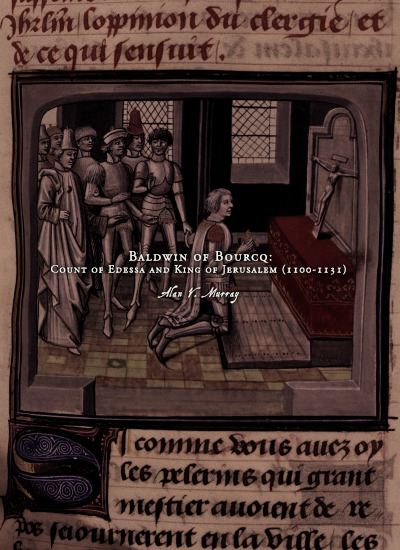
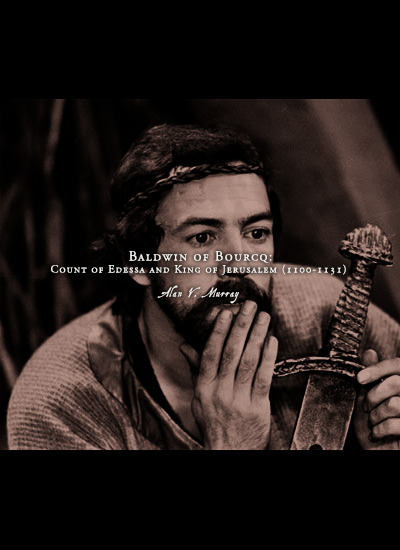

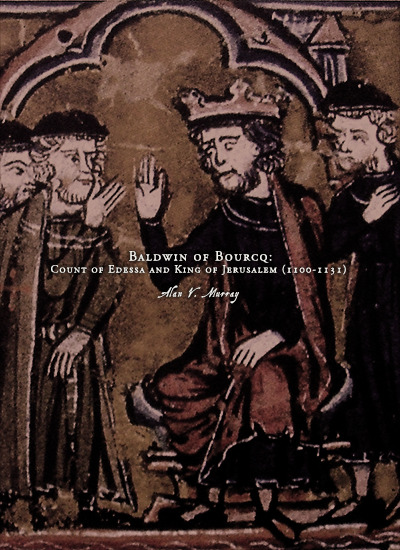
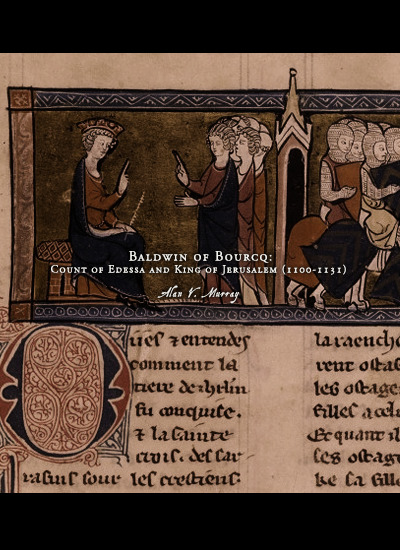

Favorite History Books || Baldwin of Bourcq: Count of Edessa and King of Jerusalem (1100-1131) by Alan V. Murray ★★★★☆
Baldwin of Bourcq first entered the historical record in 1096, when he left his home in northeastern France to join the First Crusade, the great expedition summoned in late November 1095 by Pope Urban II for the liberation of the holy sites and Christian peoples of Syria and Palestine from the domination of the Muslim Turks. After the crusaders took Jerusalem on 15 July 1099 most of them returned to their homes in the West, but a minority remained in the newly founded principalities in the Near East which came to be collectively known as Outremer, an Old French name meaning ‘[the land] beyond the sea’.
Baldwin was one of those crusaders who chose to seek their fortunes in the East. In 1100 he unexpectedly succeeded to the county of Edessa, a new Christian principality carved out of territories seized from Turkish control in north-eastern Syria and Upper Mesopotamia, in what is now southeastern Turkey. There he ruled over a diverse population of Armenians, Syrian Christians and immigrant Europeans for almost two decades. In 1118 he was called to take up the succession in the kingdom of Jerusalem, where he ruled for over twelve years. By the time he had reached middle age, Baldwin had gone from being a minor nobleman in France to one of only a dozen kings in Western Christendom.
Until now, Baldwin’s biography has never been written. In the Middle Ages it was Godfrey of Bouillon, the first Latin ruler of Jerusalem, who rapidly came to be regarded as the great chivalric hero of the crusade, and his medieval reputation was reflected in modern historiography. Because Godfrey’s life before the crusade is reasonably well documented, it also attracted the attention of historians of Lotharingia as well as of the crusades and Outremer. By comparison his brother and successor King Baldwin I was neglected in modern scholarship, but recent research has established him as the real founder of the kingdom of Jerusalem.
Whether as count of Edessa or king of Jerusalem, Baldwin II (as he is numbered in both cases) received less attention than either of his predecessors in historical research of the nineteenth and most of the twentieth centuries. However, three significant facets of his reign in Jerusalem have emerged in research of the last fifty years. Firstly, Hans Eberhard Mayer’s work on the royal chancery and the charters of the kings and queens of Jerusalem has not only provided a magnificent edition of Baldwin’s documents, but also shown how his tenure of the regency of the principality of Antioch caused significant problems for the government of his own kingdom. Secondly, prosopographical research has highlighted the importance of Baldwin’s family connections in France after he settled in the East. And thirdly, my own earlier work has made clear the importance of the attempt to depose Baldwin while he was a captive of the Turks in 1123, and the effect this had on his subsequent policies.
#historyedit#litedit#baldwin ii of jerusalem#french history#asian history#european history#medieval#history#history books#nanshe's graphics
3 notes
·
View notes
Text
https://www.reddit.com/r/JewsOfConscience/comments/1aef2x5/comment/kk7prli
u/s_y_s_t_e_m_i_c_:
Top Members of Far-right Swedish Party With neo-Nazi Roots Meet Israeli Minister in Knesset (Haaretz, January 29, 2024)
I’m reminded of a study that Peter Beinart wrote about on European antisemitism and how it is moderated by support for Israel.
Beinart explains, citing the findings of a study by Andras Kovacs, a sociologist and professor of Jewish Studies at the Central European University, and Gyorgy Fischer, the former research director for Gallup in Hungary:
In Europe, the story appears somewhat similar, but with a disturbing twist. This fall, Andras Kovacs, a sociologist and professor of Jewish Studies at the Central European University, and Gyorgy Fischer, the former research director for Gallup in Hungary, published a fascinating study entitled, “Antisemitic Prejudices in Europe.” To some degree, the evidence they find resembles evidence from the US. As a general rule, for instance, Western Europeans like Jews more but Israel less whereas Eastern Europeans like Jews less but Israel more. For instance, Romania, Poland and the Czech Republic exhibit some of the continent’s highest rates of both support for Israel and hostility to Jews. In Britain, Sweden and the Netherlands, by contrast, sympathy for Israel is far lower and so is antisemitism.
The reasons for this aren’t a mystery. Kovacs and Fischer find a strong correlation between antisemitism and xenophobia. “Antisemitism,” they write, “is largely a manifestation and consequence of resentment, distancing and rejection towards a generalised stranger.” Which is why Europe’s most antisemitic countries are also the most Islamophobic. But the very xenophobia that leads some Europeans—especially Eastern Europeans—to dislike Jews can also make them admire Israel.
The Beinart Notebook - Are Zionists more antisemitic than anti-Zionists?
Beinart states that the reason for this contradictory support is xenophobia and an admiration of Israel’s policies.
Israel, after all, has exactly the kind of immigration policy that many European xenophobes want for their own countries: an immigration policy that welcomes members of the dominant group and keeps out pretty much everyone else. Moreover, if you’re a xenophobe who dislikes the Jews in your country because they dilute ethnic and religious purity, Israel offers them a place to go and be with their own kind. That’s one of the reasons Arthur Balfour embraced Zionism in 1917. He liked the idea of a Jewish homeland in Palestine in part because he wanted Eastern European Jews to go there and not to his country.
The Beinart Notebook - Are Zionists more antisemitic than anti-Zionists?
In a nutshell, the study found a “strong correlation between antisemitism and xenophobia”—and Peter noted that xenophobic countries admired Israel, because they wanted to emulate similar policies towards immigrants.
While this news article in-question is about a Swedish figure (and Sweden overall, Peter notes, is less xenophobic, less antisemitic and thus, less pro-Israel), I think the politics at play here makes it applicable to Peter’s thesis. The Swedish party in-question are categorically fascist, ultra-nationalists. So one could see why they would find common cause with the far-right in Israel who would like to expel the Palestinians.
In England, one can observe a similar phenomena with the alliance between the English Defense League (EDL), in particular Tommy Robinson, and right-wing Zionists. The EDL has a branch for British Jewish members—and notable pro-Israel activists are supporters of such right-wing groups.
Supplemental:
Haaretz - Why the U.K.’s neo-Nazis Are Posing With Israeli Flags
Robinson in particularly has been coddled by right-wing Zionists, who have paid his legal fees when he continually fucks up in life.
The Philadelphia-based think tank Middle East Forum is one of the British extremist’s biggest sponsors. Daniel Pipes, MEF’s president, confirmed to The Times of Israel that his group has spent roughly $60,000 on three demonstrations defending Robinson’s legal trial.
The Jerusalem Post - Why are US ‘pro-Israel’ groups boosting a far-right, anti-Muslim UK extremist?
#repost of someone else’s content#reddit repost#israel#anti israel#zionism#zionists#antisemitism#zionist antisemitism#immigration#islamophobia#racism#free palestine
2 notes
·
View notes
Text
Thoughts on American foreign policy after Afghanistan and 8 months into this Ukraine nonsense.
So I've never really been able to put into words my idea of what US foreign policy should look like in the wake of Ukraine. There was so much conflicting information in those first weeks and months (and still, tbh) that I just threw my hands up and said "fuck it, I don't care as long as we don't send troops". But that never sat right with me, because I've always been in favor of expanding US power on the world stage. Isolationism is awesome, but sadly not realistic. If we don't maintain a strong military and keep our ability to project international power, some other country will (see: Russia in the Middle East and China pretty much everywhere). But at the same time, I recognize that giving politicians access to that power is a Bad Idea, because they will use it for their own ends. And that's where I am now. I think America should look after her interests to the exclusion of all other interests. I'm not against foreign action, including boots on the ground, as long as we're going to get benefits back that are equal to or greater than what we put in. In hindsight, we should have fully occupied Afghanistan and Iraq, drained as much oil and other natural resources as we could, and then left. Cold? Yes. Harsh? Yes. Immoral? Probably. And yet, here we are, 20 years later and all we have to show for it are tens of thousands of dead soldiers, billions in abandoned military equipment in the hands of people who hate us, and no influence in a region that has been responsible for the most American deaths from foreign attacks since Pearl Harbor. We can never do that again. We can never half-ass foreign involvement like that again. We need to get ours.
And by "ours", I mean something that benefits the country, if not its citizens. Not letting politicians plunder other countries or use their wars to launder money. And not so other nations can outsource their national defense to us while giving us nothing in return. And yeah, that means I'm not really in favor of sending troops in to combat "evil" that doesn't directly effect us anymore either. As awful as Russia is, what they do to Ukraine has nothing to do with us. Let Europe deal with that. Let the Eastern European states form their own anti-Russia defensive pacts and leave us out of it. Not one cent of American money should be going to foreign military unless we can use that military when we want in place of or to augment American troops.
And before anyone says it, I know how callous this is. I know that, by what I've just said, I would be arguing against the US fighting Nazi Germany until we were forced to (which is what happened anyway, but that's not the point I'm making) or until we saw an advantage to us. Maybe that means I'm not as moral as I like to think I am. Maybe there just aren't enough righteous people left to ever have another "Greatest Generation". Maybe I'm just cynical after 20 years of a war that got us nothing followed immediately by agitation for another war I see no benefit in fighting between two relatively awful governments. And maybe my ideas on this will change in a few months or years. But this is where I am now, and I wanted to write it down.
20 notes
·
View notes
Text
Utterly fascinated by the takes on Palestine you see from white non-Jewish Americans and Europeans. Here’s my perspective if you want it:
Israel is a settler-colonial state based on the displacement of Palestinians and privileged status of Jews. That’s just a fact. And a lot of early and current Zionist leaders said as much, and promoted racist policies or land thefts to push Palestinians out of their own homes. That’s all true.
However, for a lot of Jews who moved there or supported the state of Israel post ww2, it was less of a sense of Zionist politic and more a perceived existential need. In Europe, Jews were subject to a horrific genocide which wiped out approximately 2/3 of all European Jews. Following the establishment of the state of Israel, Jews living in North Africa and the Middle East (including some of the oldest Jewish communities in the world) were subject to discrimination, harassment, and accusations of dual loyalties. So while many Jews did indeed go to Israel with expressly Zionist intentions, many simply went because they didn’t really have anywhere else to go.
The trick of the Zionist project is, and always has been, predicated on a genuine fear of antisemitism. If you were a Jew who’d managed to survive a genocide where most of the world either participated in your destruction or turned a blind eye to, Israel could seem like the only logical choice. If German Jews in the 1930s, arguably the most assimilated and nationalistically loyal group of Jews could become so hated by their non-Jewish countrymen, why not simply create a state of your own?
It’s not a logic I agree with at all, and it absolutely does not excuse the continued killing, displacement, and discrimination of the Palestinian people. But I understand the fear that led people to the Israeli state.
Even today, the concept of Israel as a state is still (at least partially) based on what’s called “negation of the diaspora” (שלילת הגלות in Hebrew). That the outside world will always be hostile to Jews, that Jews can never find a homeland outside of Israel, and that to be in diaspora is always a negative state. Israeli politicians regularly use this idea to try and encourage more diaspora Jews to migrate. In 2015, following a hostage siege on the Hypercacher kosher supermarket in Paris where 4 Jews were killed, the then-Prime Minister Benjamin Netanyahu encouraged French Jews to move to Israel and even pressured the families of the four victims to hold the funerals in Israel and have them buried in Jersusalem.
To me, it’s a very defeatist attitude to take toward antisemitism. And it’s not borne out of any real concern for Jews living in France, or anywhere else in the diaspora. It’s a desperate need to have more Jews living in Israel so the balance of the state will have a Jewish majority.
Further, “negation of the diaspora” is also based on negation of diaspora culture. In the early days of the state, Jewish immigrants were discouraged from using their own languages (Yiddish, Ladino, Judeo-Arabic) in favour of Hebrew. While many Holocaust survivors moved to Israel, they were often greeted with an Israeli sense of superiority, that Israeli-born Jews were strong where they were weak, would fight back while they were passive (this is simply not true, given the many uprisings and partisan fighters during the Holocaust, but I digress). The militaristic image Israel projects is, yes, meant to intimidate and promote violence towards Palestinians, but it’s as much a projection of insecurity.
As for non-Ashkenazi Jews, they were greeted with all kinds of racism and classism. Even today, Mizrahi Jews (Jews of Middle Eastern/North African descent) are subject to discrimination in many forms and have less wealth than Ashkenazis. In the earliest days of the Israeli state, over a thousand Yemenite Jewish children (most under the age of three) disappeared while in care of the Israeli state, most dying due to medical neglect or poor conditions. And despite Israel using the Beta Israel (also known as Ethiopian Jews) as a shield against accusations of racism, the community is subject to many forms of antiblack racism, from Beta Israel women being given Depo-Provera shots without their knowledge or consent, or a Beta Israel man being shot by a (white) Israeli police officer in 2015. These are just a few examples of intra-Jewish racism in Israel, but there are plenty more.
That all being said, I still find it upsetting and frustrating when you get people with no historical context assuming that every Israel migrant moved with colonialist, bloodthirsty intentions. I find it even more upsetting, and frankly ludicrous, when people say shit like “just send them back to Europe!”. Like, first off many Israeli Jews aren’t even from Europe. And secondly, there’s pretty good reasons why Israeli Jews who are from Europe have no desire to return. Get your head out of your ass. It’s especially strange to hear the latter take from white non-Jewish Americans/Canadians/Australians. Like my friend...YOU are living on a settler colonial state! And hearing white non-Jewish Brits talk about it is almost amusing. That Britain receives virtually no blame for their actions in the Middle East is so bizarre. Just google “British Mandate” if you’re curious.
So yeah. Israel is a settler-colonial state and Zionism is a policy predicated on the expulsion and removal of Palestinians, and the idea that Jews cannot have Jewish lives in diaspora. I despise both of these concepts. Palestinians are human being who have the same inherent right to safety and comfort, and it sickens me that we Jews, who know all too well what Nationalistic violence and displacement feels like, are inflicting it on others in the name of Jewish safety.
The Jewish future is not Israel. It is not a state based on displacement and conformity, on violence and destruction, on cooperation with the same Western colonialist countries who either participated in the many attempts to destroy us or, at best, ignored it. I’m not sure what the future of the Jewish people is, but I believe it can only survive if we, instead of using the violence we have experienced to build a nationalist bunker, make common cause with other oppressed and marginalized groups and build a safe future for all of us.
#politics#Israel#Palestine#I don't like the term conflict because it obscures the fact that it's really one side perpetuating colonialism and the other side resisting#but I guess I'll use the tag#I/p conflict#israel/palestine#jewish#jumblr#judaism#can't wait to have asks calling me a bloodthirsty zionist and a traitor self-hating kapo all at once lol#it's like how capitalists think jews are communists and communists think we're capitalists#anti colonialism
52 notes
·
View notes
Text
Countries that are no more: Sikh Empire (1799-1849)
Though short lived, this empire was notable for a few reasons. First, it was the last major bastion of native rule on the Indian Subcontinent before a century of unchecked British rule which had already been gradually expanding over the preceding century. Secondly, it was diverse & tolerant in its ethnic and religious composition, not just in the general populace but more uniquely in its administration. Finally, it was notable for the religion of its leaders, perhaps the only time in history where Sikhs reigned atop an empire. This is the Sikh Empire.
Name: In English, the empire is known as the Sikh Empire. In Persian this was translated as Sarkār-i-Khālsa or the Khālasā Rāj in Punjabi. These languages were important administratively within the empire. Essentially to mean empire or kingdom of the Sikhs. Khalsa is a Punjabi term for the Sikh community more broadly and specifically means "pure" as in one professes to follow the Sikh faith and has undergone the Amrit ritual ceremony of initiation, specifically baptism.
Language: The Sikh Empire was notable for its many languages. Persian was its administrative language at court. Persian had been the language of diplomacy, administrative and the high arts from the Middle East to the Indian Subcontinent for centuries in part due to the spread of Islam to India. It was the court language of the greatest Islamic polity in the history of India, the Mughal Empire (1526-1857). Other languages which in the empire included Indo-Aryan languages such as Punjabi which was the dynastic native tongue of the ruling family and various Punjabi dialects which made up the lingua franca of the core territory of the empire. Kashmiri and Dogri were spoken in some parts as well, also Pashto (Pashtun) also known as Afghani. There were numerous others which also took place in its territory in modern India, Pakistan and Afghanistan.
Territory: At its peak, the empire held roughly 200,000 sq miles of territory. The territory was centered in the Punjab region of modern Northwestern India and Eastern Pakistan. It covered territory in the modern states of India, Pakistan, the Afghanistan & Pakistan border and even small parts of Western Tibet in modern China.
Symbols & Mottos: The motto of the empire was ਅਕਾਲ ਸਹਾਇ
Akāl Sahāi which is Punjabi for "With God's Grace" and its anthem was ਦੇਗ ਤੇਗ ਫ਼ਤਿਹ Dēġ Tēġ Fatih Punjabi for "Victory to Charity and Arms." The also used a triangled flag called the Nishan Sahib. This flag was used by Sikhs prior to the 1799 establishment of the empire and continued to have use after its 1849 disestablishment. It is usually depicted as an orange inner field with a green outer field with golden trim and patterns both on the green outer field and orange inner field. There were also individual flags for various Sikh, Hindu and Muslim regiments within the army as well. The Muslim ones often sharing similarity with the modern Pakistan flag.
Religion: Sikhism was the dynastic religion and religion of roughly 6-12 percent of the overall population. 50-80 percent of the populace was Muslim and 10-40 percent Hindu. There were also smaller populations of Christians and Jews as well. Religious tolerance was practiced as a matter of policy throughout the empire. Sikhs certainly benefitted from a ruling dynasty that was of their community however with larger populations of Muslims and Hindus among their territory, policies of accommodation and tolerance were practiced to other faiths as well. Likewise Indian and European Christians could practice their faith and rise to important military and government positions and even some Jews featured in the military as well. Promotion within the military and government more broadly had less to do with religion, ethnicity or geographic origin than with merit and personal loyalty.
Currency: The currency of the empire was called Nanak Shahi Sikee, these were metal coins usually of silver composition.
Population: The population was estimated to be roughly 12 million people at its peak in in the late 1830s and early 1840s.
Government: The government could be characterized as a federal monarchy with a later adoption of elements of absolute monarchy. Its origins lie in the Sikh community which started in the Punjab region of the Indian Subcontinent. This region consists of modern Pakistan (mostly) and some of India (remaining portion). It spans the five major rivers west to east (Indus, Jhelum, Chenab, Ravi & Sutlej). Sikhism had its origins and greatest core in the Punjab region among Punjabis. Though it is a relatively young religion by comparison to Hinduism and Islam, elements of overlap and interaction with both of these older faiths have influenced it. Nonetheless, Sikhs faced alternating periods of tolerance and persecution throughout the Mughal Empire and many Sikhs hid in jungles near the Himalayan foothills as refuge from the Muslim Mughals and various local Hindu hill tribal chiefs who persecuted them.
In response to this persecution from their neighbors, Sikhs formed militias to protect their religion community, these militias were called jathas and in turn these formed into a larger Dal Khalsa (Sikh army) circa 1735-1738. in 1748 at Amritsar, India, the most holy city for Sikhs in 1748 these militias were reorganized into a misl which is an Arabic term for equal. These misls became known as the Sikh Confederacy or Misl period (1748-1799). There were twelve sovereign Sikh misls formed and later a Muslim ruled misl which created a federation or confederacy united by Sikhism to preserve and protect their religious faith. There was uneven strength between the misls and some tried to expand at the expense of others, but they still formed a common defense of their community and even held biannual legislative meetings in Amritsar to address matters of the community.
The Mughal Empire suffered major decline in the 18th century following the death of its emperor Aurangzeb in 1707. The combination of a ruined economy from expensive wars, decentralization of power and the expanse of the Hindu oriented Maratha Empire (1674-1818) from the Western Deccan Plateau all contributed to its decline and creation of a power vacuum in parts of India, including the Punjab. To make matters worse, Nader Shah, the Shah of Persia invaded the Mughal Empire in 1739 and sacked the Mughal capital at Delhi. The plundering of riches from the Mughal capital was so great that Persia experienced three years exempt from all internal taxes. In this context the already persecuted Sikhs sought greater mutual defense, though their political autonomy remained relative to their respective misl. Despite the occasion inter-fighting with each other. Other problems came from the Afghan Durrani Empire which grew in the wake of Nader Shah's passing in Iran. The Durrani Empire would expand into Northern India including the Punjab and make the Mughals their vassals especially after defeating the Maratha Empire in 1761 at the Third Battle of Panipat. The Afghans would battle the Sikh Misls many times which aimed to defend themselves in the power vacuum from the Mughal decline.
The founder of the Sikh Empire proper, who united all the thirteen misls was a man named Ranjit Singh (1780-1839) who was of Jat-Punjabi ethnic origin and specifically Jat Sikh ethnoreligious families. His father Maja Singh and grandfather Charat Singh were the founders and chiefs of the Sukerchakia Misl. Ranjit was afflicted with smallpox as a child and left him blind in his left eye and scarred on his body, features which were noted by observers from Europe later in life.
Ranjit's father died when he was 12 and he took over chiefdom of the Sukerchakia Misl which was among the five most power Sikh misls. Through marriage Ranjit had alliances with two of the other top five misls. The Kasur misl near the major city and traditional capital of the Punjab of Lahore was controlled by a Muslim who assisted the Afghans in their invasions of India. Ranjit Singh defeated an Afghan invasion in 1797 in battle. In 1798 another Afghan army was checked by Ranjit Singh through scorched earth tactics.
in 1799 Ranjit Singh took Lahore using a combined 50,000 strong army made from his misl and that of his mother-in-law. This was traditionally dated as the founding of the Sikh Empire as Lahore would serve as its capital but Ranjit Singh would be formally vested as the Maharaja (King) of the Punjab in 1801.
Ranjit Singh held many titles, but the principal ones were Maharaja of the Punjab and Sarkar Khalsaji (Head of the Khalsa) which showed his titular leader status over the Sikh army and other misls. His authority was both geographic in nature and communal-religious in nature (to a degree).
Ranjit Singh would rule and expand the Sikh Empire until his death in 1839. The empire would survive roughly a decade after his demise.
Ranjit Singh was tolerant towards background in his governance and believed in merit and loyalty above all else. He hired Sikhs, Muslims, Hindus and Christians into his military and civil administration. These could also be Indians and Europeans with some French, Italian, Spanish, Russian & German officers taking leadership within his military. Even a few American adventurers such as Josiah Harlan and Alexander Gardner found work within Ranjit Singh's empire. The former Harlan (born to Quakers in Pennsylvania) taking on a governorship and the latter Gardner who was said to be born to a Scottish or Irish (possibly Scots-Irish) fur trader in modern day Wisconsin and had travelled to Central Asia dressed in a turban decked in Scottish tartan pattern joined the Sikh Empire's military where he served as a colonel and commanded the artillery. Ranjit refrained from hiring British officers joining his ranks but still communicated with the British East India Company which was Britain's state sponsored corporation bent on controlling India for its geostrategic and economic benefits. He relented slightly after 1835 and hired some British into his ranks.
Ranjit was secular and tolerant in his rule overall but personally followed Sikhism, he restored Sikh Gurdwaras (temples) and also prayed with Hindus in their own temples and upheld the Hindu sacred protection of cows and prevented their slaughter under punishment by death. Likewise, he had standing orders that his army was never to loot or molest civilians especially when conquering new territory and to not destroy houses of worship. All discipline was to be strictly enforced under his order. Observers noted that Ranjit would increase the salary of those who didn't engage in corruption and slice the nose off of those who were said to misbehave or act corruptly in his administration of state affairs. The mutilation was not only physical discipline but a psychological scar to deter bad behavior and forever mark one as untrustworthy.
The above is the consensus of most accounts, there are some Muslim accounts from the mid-19th century which portray Ranjit's reign as despotic and biased towards Kashmiri Muslims. The overall picture is one of a complex individual but generally agreed upon to be tough and strict at times but also overall pragmatic and not willing to let religious or national background create a personal bias towards their utilization in his administration.
After Ranjit's death the rules of succession weren't clearly established and in quick succession his son, grandson and subsequently two other sons ruled in his wake with his son Duleep Singh reigning the longest from 1843-1849. Duleep would later live in exile in Europe following defeat his by the British.
Military: The Sikh Khalsa Army at its peak in 1839 was roughly 125,000 men strong and it had infantry, cavalry and artillery components. Its origins lied in the Sikh jathas of the late 17th and early 18th centuries which passed onto the Sikh Misl (Confederacy) period of the later 18th century. These were typically cavalry based and engaged in hit and run tactics against the Mughals, Maratha and Afghans. Later Ranjit would modernize the Sikh army along European principles utilizing European and American recruited officers and by purchasing and developing modern weapons.
The military were given performance standards for logistics of troop deployment, maneuver and marksmanship. Likewise, the army was divided into three segments of elite troops, regulars and irregulars. Each with its own infantry, cavalry and artillery component. Even European style medals and awards for merit could be issued, including the Order of Merit with Ranjit's portrait featured on the medal.
Ultimately, the empire's military was a synthesis of modern (19th century) Western organization, discipline and technology with the original Indian cavalry hit and tactics and methods of its Sikh jatha forebearers.
Its infantry composition was not just Western officers and Sikhs of the Punjab for originally Sikhs looked down upon the infantry and so Afghans, Dogras and Nepali Gurkhas among others filled the infantry ranks. In time Punjabi Sikhs joined its ranks too. It reached over 50,000 in strength.
The cavalry reached a strength of 10,000 strong and consisted of Sikhs mainly, given their traditional use of cavalry dating back to jatha and misl eras preceding the 19th century.
The artillery was made up of 5,000 gunners at its peak with heavy cannons pulled by elephants, medium cannon pulled by oxen, light cannon pulled by horses and some mixed guns pulled by camels.
The traditional enemies of the empire in war consisted of the Afghans who presented its greatest threat from the West, the Sikhs pushed the Afghans from the Punjab and pressed into Afghanistan itself before being checked at the border, this demarcated the empire's western limit.
Other enemies included the Kingdom of Nepal which the Sikhs defeated. The Sikh Empire and its vassal the Dogra Rajput also fought against the Chinese Qing Empire and its vassal Tibet which resulted into a military stalemate but saw brief occupation of parts of Western Tibet in the early 1840s.
Its terminal enemy was the British East India Company which would face and defeat the Sikh Empire in two wars (1845-1846 and 1848-1849). The second war would lead to the British annexation of the Punjab and formal cessation of the Sikh Empire.
Lifespan: The empire's origins date back to the 18th century formation of the Sikh Misls within the Punjab and its gradual union under Ranjit Singh. Formally dated to start his 1799 capture of Lahore. In 1801 Ranjit was formally coronated as Maharaja of the Punjab.
Over the next several decades the empire would expand in several directions with the gradual defeat of the Afghans and Marathas who warred in the vicinity of the Punjab.
1809 saw Ranjit Singh sign a treaty of friendship with the British East India Company (EIC). This treaty requested Sikh help against the French should they attack EIC possessions elsewhere in India. Also, the Sikhs were not to pursue conquest south of the Sutlej River which acted as a border between Sikh and British spheres of influence. In reality this bought Ranjit time to focus on expanding against the Afghans in Punjab and Kashmir.
The empire expanded well into the fall reaches beyond Kashmir and Jammu and gained vassals in the Ladakh region. Likewise, the Sikhs would go onto fight the Nepalese (Gurkhas) and check their advance towards Kashmir.
The empire's lifespan very much mirrored with its founder Ranjit Singh's. Ranjit Singh had unified the Sikh Misls of the Punjab through alliance and conquest, and he driven out the Afghan invaders and expanded the Sikh polity he created to vast territories with tributary states of its own. He also gained riches from conquest, meritorious tax collections and trade agreements. Financed religious temple constructions of various faiths and modernized the military. Yet while his empire was on the surface strong, it was to peak with his demise in 1839. His health had declined in the 1830s due to a stroke and alcoholism as noted by many observers. He was said to treat his chronic pain with alcohol and opium though conversely, he refused to eat beef or smoke and was somewhat health conscious. Ultimately it was said he died of a combination of stroke and his failing liver due to his excessive alcohol consumption. He was cremated and four of his Hindu wives are said to have committed sati (ritualistic devotional suicide of widows by casting oneself onto the husband's burning funeral pyre) in a final act of martial devotion to their departed spouse.
In Ranjit Singh's wake, his sons and grandsons found themselves competing for succession, their were deep internal divisions and who to support and in quick order a son, grandson and two more sons of Ranjit took control with the youngest son Duleep Singh taking "control" at age five in 1843 and he would nominally reign for six years. He had a regency under his mother Jind Kaur for the years of his rule.
Following Ranjit's death, the internal division over support of his successors along with the ruling elite of the army which saw itself as the true extension of state and religion was convinced to go to war with the British in 1845-46. The Sikh administrators were said by the British to undermine the plurality and tolerance under Ranjit Singh towards other religions pushing for a Sikh supremacy in all matters. In response, the British began building a military presence along the Sutlej River, viewed as a provocation by the Sikhs. The British stated it was defensive in nature given what they saw as increasing chaos in the Sikh Empire. However, the Sikhs contend it was intended as offensive in nature to goad the empire into war. Whatever the varied causes war began in late 1845 and concluded with British victory in 1846. The result was the partial subjugation of the Sikh Empire with some territory and monies being ceded to the British. Also, separately Kashmir would be sold the to the princely state of Jammu (under British sponsorship).
Tensions between both the Sikhs and British remained which culminated in a second war in 1848-49 and saw the Sikhs fight valiantly but once more defeated. In April 1849 at Lahore, the British annexed the Punjab up to the fortress of Peshawar, gateway to the Khyber Pass towards Afghanistan. The British East India Company turned the Sikh Empire into the Punjab and North-West Frontier Province regions in modern Pakistan and India.
The British were impressed with the military prowess of the Sikhs, in part due to the religious devotion of its troops and in part due to the modernization efforts of Ranjit Singh and his able commanders. The conquest of the Sikh Empire served as the removal of last major obstacle to British rule over the whole of India. Recognizing the prowess of Sikh troops, the British were quick to incorporate them into the British Indian Army. A role they would play from the 1850s including during the Indian Rebellion of 1857 until World War II and the eventual granting of independence to India and Pakistan.
Duleep Singh was brought up in exile in Europe following the British annexation of the Sikh Empire, his teenage years spent in Scotland. He would go onto have family there and the Crown Jewels of the UK now in possession of the British Royal Family would incorporate some of its jewels taken from the Sikh Empire's Duleep Singh. Queen Victoria received the Koh-i-noor diamond which is set in the Queen Mother's crown to this day. The diamond dates back to the Mughal Empire and changed hands with the Persian looting of Delhi to Nader Shah before ending up in the Durrani Empire of Afghanistan and then the Sikh Empire under Ranjit Singh and finally with the British as a gift to Queen Victoria as it was formally surrendered to the EIC and then gifted to the queen. The modern governments of India, Pakistan Afghanistan (including the Taliban) and Iran have all demanded its return to them respectively, a demand which Britain's government has rejected. In 2018, India's Supreme Court & the Archeological Survey of India supported Britain's legal claim, stating the Treaty of Lahore in 1849 secured it through voluntary surrender, stating it was neither stolen nor taken by force, so it remains with the British Crown despite ongoing controversy.
Though the Sikh Empire lasted only half a century for the reasons outlined above, it is a polity worthy of study. First and foremost, its historical place in India as the last major bastion of independent native resistance before total British rule has endeared it to some Indian and Pakistani nationalists and international anticolonial narratives. The British recognized through its occasional defeats in battle at the hands of the Sikhs that they were a force to be reckoned with. Both sides earned a begrudging martial respect for the other following the two wars they fought. The British were keen to utilize the Sikhs for their own military, for which they served over the next century in many campaigns worldwide. Outside from its place in narratives of native resistance to colonial rule and its well-founded military prowess. The empire is relatively unique for its synthesis of administrative help from both within India and the West. Much of this can be chalked up to Ranjit Singh's personally pragmatic and disciplined approach to governance. Quite simply put Ranjit Singh wanted what he thought were the most qualified leaders regardless of ethnic or cultural background. Their merit as modernizers and reformers coupled with personal loyalty were prized above religious or ethnic affinity. Finally, the Sikh Empire is noteworthy simply for being to date the only Sikh run imperial polity in world history. Though it was the successor of the Sikh Misls which had a unified common defense, these misls were essentially politically independent in their own right rather than a singular polity. The Sikh Empire is the only time in history that a ruling dynasty over a vast territorial expanse came from practitioners of that religion and it was supported by an army and administration centered around that faith as well.
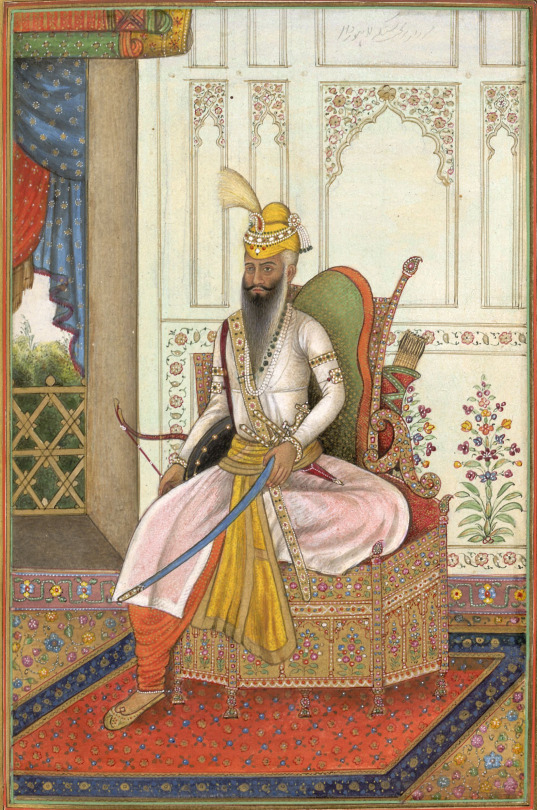

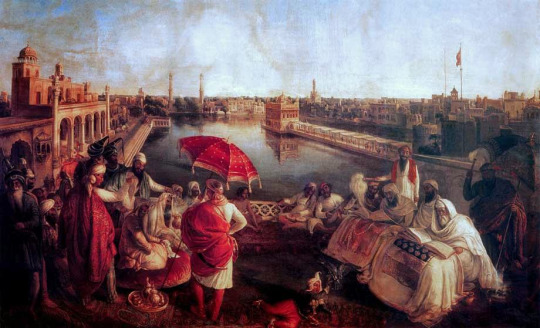
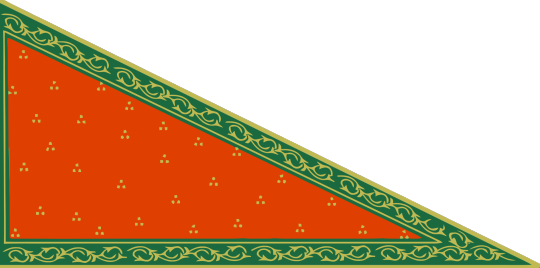


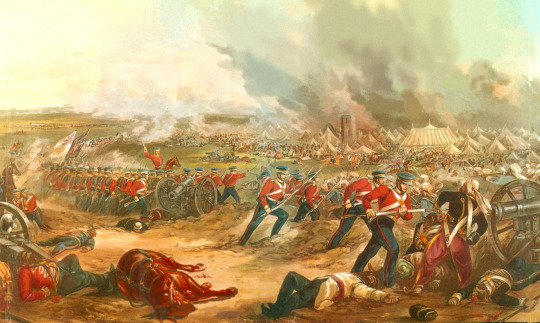
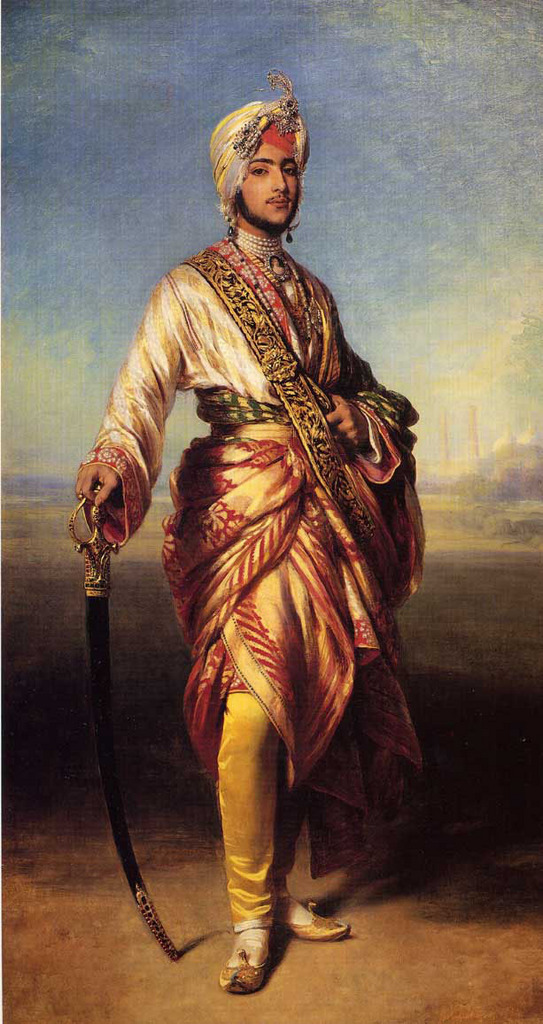
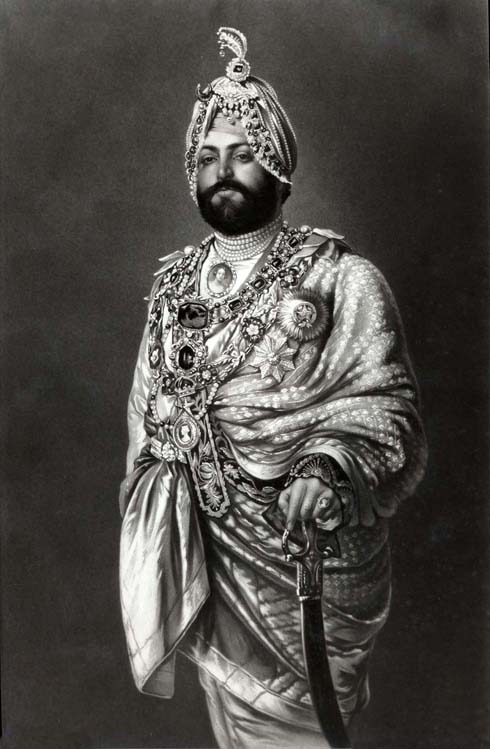


#military history#history#sikh#sikhism#india#british east india company#british imperialism#british empire#19th century#victorian era#ranjit singh#punjab#pakistan#18th century#mughal empire#maratha empire#queen victoria#british india
3 notes
·
View notes
Photo





The Other Story of Munich 1972...
The Munich Olympic Games is a really great example that there may be several major historical moments going on at the same time. Olga Korbut revolutionizes gymnastics at Munich but there is something else that is just as earth shattering at the time. It’s a cold war story but one that doesn’t involve the Soviet Union.
Have you ever heard of the Hallstein Doctrine? I’m willing to bet you haven’t and you aren’t uneducated or ignorant if that’s the case. But it had a very large impact on gymnastics in the 1960s.
The Hallstein Doctrine was a policy of the West German government starting in 1955 which said, essentially, that West Germany would break off diplomatic relations with any country that acknowledged East Germany as a country or the reality of the two Germanys. In 1959 the flying of the East German national flag, symbols, and anthem were made a public offense--under the same laws that banned swastikas and Nazi anthems. As West Germany was a one of the largest economic powers in Europe and many particularly small countries that were non aligned simply couldn’t afford to flaunt these demands (major exceptions being some Middle Eastern countries).
Uncle Tim over at Gymnastics History has a wonderful article about a 1969 Japanese meet where the Hallstein Doctrine wrecked havoc and how it effected sports in the 1950s and 1960s.
In many cases East German athletes would end up having to withdraw from events when (their entirely understandable) demand that their flag and anthem be respected was not met. This happens frequently these days when world championships in many sports are held in Arab countries and feature Israeli athletes. If the bans and limits on East German symbols were flaunted (as the DDR would do as a matter of their own politics), NATO countries would often impose or threaten travel restrictions on athletes.
So what does that mean for the 1972 Olympics? Well the Hallstein Doctrine was becoming unworkable in the late 1960s. In 1969 new West German Chancellor Willi Brandt changed policies to something called Ostpolitik (literally Eastern Policy) which went to normalize relations between Eastern Europe and the DDR in particular. It happened none too soon for the organizers of the Munich Olympics who were already dealing with a nightmare of how to handle athletes wearing symbols that were themselves illegal in the country.
Still it was a massive geopolitical shock to see if you were standing in Munich at the start of the games. And in no place was that more clear than the Olympiahalle for gymnastics. The DDR men’s team took bronze, the women’s team took silver with Karin Büttner-Janz winning the silver medal in the all around only .15 behind Ludmilla Tourisheva. Come event finals Janz won two gold medals on vault and the uneven bars. And the anthem was played in the hall.
At the 2022 Munich European Championships a lot of the english language commentary referred to Olga Korbut changing the sport. What you might not have realized was that something else happened there. Several of the surviving members of that silver medal winning team from 1972 presented medals to athletes in a hall that in their youth many didn’t want them to be in in the first place.
Elisabeth Seitz, the first European champion from a unified Germany received her medal from Dr. Karin Büttner-Janz who had won 4 gold medals at the 1969 European championships in addition to her two gold and two silver Olympic medals.
13 notes
·
View notes
Text
Europe’s never-ending struggle to provide tidbits of assistance to Ukraine while still pandering to the agricultural lobbies that dictate so much policy in Brussels took another tortured turn this week. The European Commission hammered out its latest, tentative compromise plan to offer Kyiv another year of tariff-free access to the European single market for some agricultural products—but it’s not a done deal, and it could end up as a nasty tripwire for Ukraine’s hopes to join the European Union.
At issue is a monthslong tussle over the renewal of tariff-free access for a handful of Ukrainian farm goods, such as eggs, poultry, honey, and maize (corn). Ukraine, which is not a member of the EU and is in the middle of a war with Russia, desperately wants the trade relief, which it figures is worth well over 1 billion euros a year in much-needed export earnings.
Europe as a whole is unlikely to be concerned about such rounding-error figures, but certain groups in Europe—namely farmers in eastern “front-line” countries—care very much indeed. Farmers in Poland have added angry chants against Ukrainian food imports to the standard-issue complaints about the European Green Deal and free trade that animate farmer protests across the continent; they’ve even blocked the borders east and west in protest against what they say is a flood of outside food that is undermining their livelihood.
In a nutshell, Europe’s bid to offer Ukraine the tiniest of economic lifelines is threatening to weaken support for the country’s eventual membership in the EU by angering groups with outsized political influence that feel threatened by what looks to them like the stealth arrival of a new trade rival. That is most evident in Poland, Ukraine’s neighbor, which when the war began was hugely supportive of aiding Kyiv in any way possible but which in recent months has become a lot more sour on defense assistance, Ukrainian refugees, Ukrainian wheat, and, of course, Ukrainian EU membership.
According to recent opinion polls, support among Poles for further aid to Ukraine is dropping sharply, and that is especially true among more right-wing voters (as is true across much of Europe). One big reason for this decline in support is the fight that Polish farmers have waged against what they see as a flood of cheap, foreign food.
“What I can say is that the support for Ukraine has taken a real hit in Poland. Look at enlargement, support for refugees, even weapons,” said Isabell Hoffmann, a survey expert at Eupinions, an independent platform for European public opinion. “Support was extraordinarily strong before, and it is still strong today. But it weakened notably and quickly.”
Poland has been fighting over Ukrainian food imports for a year, but the protests intensified at the beginning of this year with further border blockages and anti-Ukraine animus which have found widespread popular support.
“This issue has become very toxic in domestic politics. There are more and more critical voices in Poland,” said Piotr Buras, the head of the Warsaw office of the European Council on Foreign Relations (ECFR). “This is the paradox: The European Commission is talking about more gradual integration with Ukraine and the single market, but we are talking about the gradual closing of the single market for Ukraine.”
All this began, like so many of Ukraine’s current woes, with the full-scale Russian invasion in early 2022, which threatened Ukraine’s breadbasket agricultural regions and, importantly, its main export route through the Black Sea. The EU offered emergency tariff relief for a host of Ukrainian agricultural goods so they could travel overland and into the EU and trade without prejudice.
For Ukraine, desperate to earn foreign currency and boost the few exports that were left after the Russian invasion, it was a tidy little lifeline.
“From an economic point of view, agriculture remains one of the key export sectors of Ukraine,” said Marek Dabrowski, an expert on European trade and enlargement issues at Bruegel, a think tank. “Before the war, it was metallurgy and industry, but then part of that was destroyed, and part is occupied, so exports now are essentially down to agricultural goods. The reason for these ‘emergency measures’ has not gone away.”
Indeed, those emergency measures have continued every year since—until now. The European Commission planned to simply roll the tariff relief over this year, giving Ukraine one more year of free access, worth about 1.7 billion euros for Kyiv’s empty coffers. But many of the countries bordering Ukraine, including Hungary, Poland, and Slovakia, pushed back at what they viewed as a flood of cheap Ukrainian grain that was undermining their own farmers. Some countries, such as Poland, unilaterally blocked Ukrainian farm goods from staying in the country.
Together, and most recently backed by France, those countries pushed for a tougher version of tariff relief for Ukraine that would have limited the amount of agricultural goods it could sell to Europe. The European Commission and European Parliament have been at work hammering out ever-tougher versions of tariff relief ever since.
The latest proposal would still offer Ukraine relief for another year but with tougher quota baselines, which would cost Kyiv about 350 million euros annually. Ukraine’s farm lobby on Thursday decried the slide toward EU “protectionism” in the latest wrangling. But even that compromise measure still has to pass the European Parliament, where it could face yet further efforts to weaken Ukraine’s access.
While an extension, even a watered-down one, would still be welcome in Ukraine, the problem is the perception that such preferential trade policies create in front-line countries such as Poland. Ukrainian grain is not the cause for the plight of Polish farmers any more than it is the reason for angst in the countryside in the other 26 EU member states; that has a lot more to do with falling prices for global agricultural staples such as wheat, as well as slightly tougher (and costlier) EU regulations on agricultural production.
But many who are getting kicked while they are down don’t look carefully at precisely who is doing the kicking, and continual European assistance for Ukraine rubs many in the east the wrong way.
The temporary trade measures amounted to a full opening, Buras of ECFR said. “Basically, Ukraine jumped from a piecemeal opening to European access to the final stage of this process,” he said. “Nobody expected these measures to remain in place for three years or more. Technically, we have a full opening of the single market to Ukrainian products.”
The risk is that the tiny measures Europe is taking to shore up Ukraine today with trade relief could end up as a poisoned chalice in years to come. Once the war is over, Ukraine is widely expected to get on with its decade-long quest to become a member of the EU—a step that ultimately needs the go-ahead from all current member states.
“The Ukrainians should also, seen from Warsaw, be a little more careful when they push for more liberalization,” Buras said. “At the end of the day, Ukrainians are dependent on Polish support” to join the EU, he added.
6 notes
·
View notes
Text
vanessa marie moore, thirty years old, cia agent, june 15th 1993, seattle, washington.
early life and education: vanessa grew up in a middle-class neighborhood in seattle. her father was a police detective, and her mother was a high school english teacher. from an early age, vanessa showed a keen intellect and a strong sense of justice, often inspired by her father's stories from the field. she excelled in academics, particularly in languages and analytical subjects, and participated in extracurricular activities like debate club and track. after graduating high school with honors, vanessa attended georgetown university, majoring in international relations with a minor in cybersecurity. her interest in global affairs and technology led her to study abroad in europe, where she became fluent in french and spanish. during her college years, she interned with a think tank in washington, d.c., focusing on global security issues, which further solidified her desire to work in intelligence.
career: upon graduating magna cum laude, vanessa was recruited by the cia. she started in the directorate of operations, where she underwent rigorous training in espionage, combat, and covert operations. her ability to blend in, analyze complex situations, and her linguistic skills quickly set her apart from her peers. vanessa's first assignments involved counter-terrorism operations in the middle east. she worked undercover, gathering crucial intelligence that led to the disruption of several terrorist plots. her meticulous attention to detail and quick thinking under pressure earned her commendations and rapid promotions within the agency.
notable missions: operation desert shield: vanessa infiltrated a terrorist cell in syria, providing real-time intelligence that led to the capture of a high-value target without any collateral damage. project nightfall: she played a key role in dismantling a european human trafficking ring, coordinating with local law enforcement and ngos to rescue victims and bring the perpetrators to justice. cyber threat mitigation: as part of a joint task force, vanessa helped uncover and neutralize a state-sponsored cyber attack aimed at compromising critical infrastructure in the united states.
skills and abilities: languages: fluent in english, french, spanish; conversational in arabic. combat training: proficient in hand-to-hand combat, firearms, and tactical driving. technology: skilled in cybersecurity, cryptography, and surveillance technologies. espionage: expertise in undercover operations, asset handling, and interrogation techniques.
personal traits: vanessa is known for her sharp mind, resilience, and unwavering dedication to her mission. she is fiercely independent but values teamwork and the support of her colleagues. her experiences in the field have made her empathetic, particularly towards victims of violence and injustice.
challenges and motivations: despite her success, vanessa grapples with the moral complexities of her work and the personal sacrifices it demands. she struggles to maintain relationships outside the agency, often haunted by the faces of those she couldn't save. her father's untimely death in the line of duty fuels her determination to protect others and uphold justice.
current assignment: vanessa is currently stationed at a covert cia outpost in eastern europe, tasked with monitoring and countering russian espionage activities. her work involves deep cover operations, intelligence analysis, and liaison with allied intelligence agencies.
future aspirations: vanessa aims to ascend to a leadership role within the cia, where she can influence policy and mentor new recruits. she is also considering writing a memoir to shed light on the hidden sacrifices and ethical dilemmas faced by intelligence operatives. vanessa moore is bisexual and her faceclaim is alicia vikander.
1 note
·
View note
Text
Case Studies: Successful Use of Trade Finance Products in International Business
Trade finance products are instrumental in facilitating international business transactions by providing financial instruments that mitigate risks and improve liquidity. Here are some case studies showcasing successful implementations of trade finance products in global trade scenarios.

Case Study 1: Letters of Credit (LCs) in Manufacturing
Overview
A manufacturing company in Germany secured a significant export contract with a client in the United States. To mitigate the risk of non-payment and ensure timely receipt of funds, the company opted to use a confirmed irrevocable Letter of Credit (LC).
Implementation
LC Structure: The German company negotiated an irrevocable LC with a reputable U.S. bank, ensuring that payment would be guaranteed upon meeting specified conditions.
Risk Mitigation: By using a confirmed LC, the company minimized the risk of buyer default and currency fluctuations, ensuring financial security throughout the transaction.
Outcome
Smooth Transaction: The LC facilitated a smooth transaction, providing assurance to both parties and enabling the timely delivery of goods.
Financial Security: The company received payment promptly upon complying with the LC terms, enhancing cash flow and supporting further business expansion.
Case Study 2: Trade Credit Insurance in Exporting Agricultural Products
Overview
An agricultural exporter in Brazil faced challenges in exporting fresh produce to European markets due to concerns over buyer creditworthiness and political risks.
Implementation
Trade Credit Insurance: The exporter opted for trade credit insurance to protect against non-payment and political risks associated with international trade.
Coverage: The insurance policy covered the exporter's receivables against risks such as buyer insolvency, protracted default, and political instability.
Outcome
Market Expansion: With trade credit insurance in place, the exporter gained confidence to explore new markets in Europe and expand sales volumes.
Risk Management: The insurance provided peace of mind, enabling the exporter to focus on production and market penetration strategies without worrying about payment defaults.
Case Study 3: Export Financing in Textile Industry
Overview
A textile manufacturer in India received a large order from a retailer in the Middle East but lacked sufficient working capital to fulfill the order.
Implementation
Export Financing: The manufacturer secured pre-shipment financing from a local bank to cover production and shipping costs.
Loan Structure: The financing included a structured loan facility with favorable terms, allowing the manufacturer to produce and deliver the goods on time.
Outcome
Timely Delivery: The export financing ensured timely production and shipment of textile products, meeting the retailer's demand schedule.
Business Growth: With successful execution of the order, the manufacturer strengthened its reputation and established long-term relationships in the Middle Eastern market.
Case Study 4: Documentary Collections in Automotive Parts Trade
Overview
An automotive parts supplier in Japan needed a secure and cost-effective method to receive payment from a buyer in South Korea.
Implementation
Documentary Collection: The supplier utilized Documents Against Payment (D/P) to ensure secure payment before releasing shipping documents to the buyer.
Process Efficiency: This method provided a straightforward and efficient way to manage international transactions without the complexities and costs associated with Letters of Credit.
Outcome
Payment Security: The use of documentary collections ensured that the supplier received payment promptly upon shipment, reducing payment risks.
Cost-Effectiveness: Compared to other payment methods, documentary collections offered a cost-effective solution while maintaining transaction security.
Conclusion
These case studies highlight the diverse applications and benefits of trade finance products in international business. From mitigating payment risks with Letters of Credit to expanding market reach with trade credit insurance and improving cash flow with export financing, these products play a crucial role in supporting businesses' global trade operations. By leveraging trade finance products effectively, companies can enhance financial security, manage risks, and seize opportunities for growth in the competitive global marketplace.
0 notes
Text
EU countries disagree on imposing sanctions on Iran for supplying weapons to Middle East
EU countries cannot agree on whether to impose new sanctions against Tehran, The Wall Street Journal reports.
France, Germany, the Netherlands and several other European countries have called for sanctions against Iran for supplying missiles and military equipment to its Middle Eastern allies. In February, they addressed this issue to the head of European diplomacy Josep Borrell. He responded that new anti-Iran sanctions could lead to “the unification of two theatres of war”, which could have “unforeseen consequences”. Josep Borrell said:
“It is crucial to carefully assess the potential impact of further measures to avoid that EU intervention could be interpreted as an escalation or jeopardise other important EU policy objectives, such as containing Iran’s nuclear programme, which is more urgent than ever.”
Read more HERE

#world news#world politics#news#europe#european news#european union#eu politics#eu news#middle east#middle east news#middle east conflict#middle east war#middle east crisis#iran#iran news#iran politics#israel palestine conflict#israel hamas war#sanctions#geopolitics
0 notes
Link
0 notes
Text
Solid Oxide Fuel Cells (SOFC) Market| Market Size, Analysis and Forecast, 2023 – 2027
Originally published on Technavio: Solid Oxide Fuel Cells (SOFC) Market - North America, Europe, EMEA, APAC : US, Canada, China, Germany, UK - Forecast 2023-2027
The Solid Oxide Fuel Cells (SOFC) Market is currently undergoing a comprehensive analysis for the forecast period from 2023 to 2027, with a focus on key regions, including North America, Europe, EMEA (Europe, Middle East, and Africa), and APAC (Asia-Pacific). The market analysis also highlights specific countries within these regions, such as the United States, Canada, China, Germany, and the United Kingdom. This research aims to provide insights into the evolving dynamics of the SOFC market, considering factors such as technological advancements, government policies, and the increasing demand for clean energy solutions.
**North America:**
In North America, particularly in the United States and Canada, the SOFC market is poised for significant growth. The region has been at the forefront of technological innovations and has witnessed increased interest in clean energy solutions. Government initiatives, research and development investments, and a focus on reducing carbon emissions are driving the adoption of SOFC technology. The United States, in particular, has seen advancements in fuel cell technologies, and SOFCs play a crucial role in providing efficient and environmentally friendly power generation solutions.
**Europe:**
Europe is a key player in the global SOFC market, with countries like Germany and the United Kingdom leading in technology development and deployment. The European Union's commitment to achieving carbon neutrality and the transition towards green energy sources are contributing to the growth of the SOFC market in the region. Germany, known for its emphasis on renewable energy, is a major contributor to advancements in SOFC technology. The United Kingdom is also making strides in adopting fuel cell technologies as part of its clean energy agenda.
**EMEA (Europe, Middle East, and Africa):**
The EMEA region, which includes countries in Europe, the Middle East, and Africa, is experiencing a gradual but steady growth in the SOFC market. Countries in the Middle East, with their focus on diversifying energy sources and reducing reliance on traditional fuels, are exploring SOFC technology for power generation. Additionally, European nations not covered in the European Union, such as those in Eastern Europe and the Balkans, are increasingly recognizing the potential of SOFCs in meeting their energy needs.
**APAC (Asia-Pacific):**
Asia-Pacific, with China at the forefront, is a key player in the global SOFC market. China's commitment to clean energy solutions, coupled with substantial investments in research and development, has positioned the country as a major contributor to the growth of the SOFC market in the APAC region. Other countries in the region, such as Japan and South Korea, are also investing in SOFC technology as part of their efforts to achieve sustainable and low-carbon energy systems.
The forecasted period from 2023 to 2027 is marked by an industry-wide emphasis on improving the efficiency and cost-effectiveness of SOFC technology. As governments worldwide continue to prioritize clean energy solutions and decarbonization, the SOFC market is anticipated to witness increased research and development activities, technological advancements, and broader commercialization efforts. The market's evolution aligns with global efforts to transition towards sustainable energy sources, and SOFCs are positioned to play a crucial role in this transformative process.
To Learn deeper into this report , View Sample PDF
In conclusion, the Solid Oxide Fuel Cells (SOFC) Market is set for substantial growth, driven by the increasing recognition of SOFC technology as a viable and efficient solution for clean power generation. The industry's evolution aligns with global goals for sustainability and the transition towards a low-carbon future.
For more information please contact.
0 notes